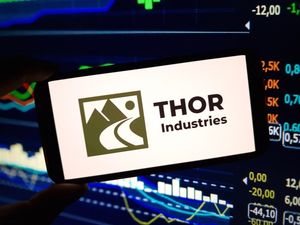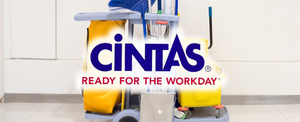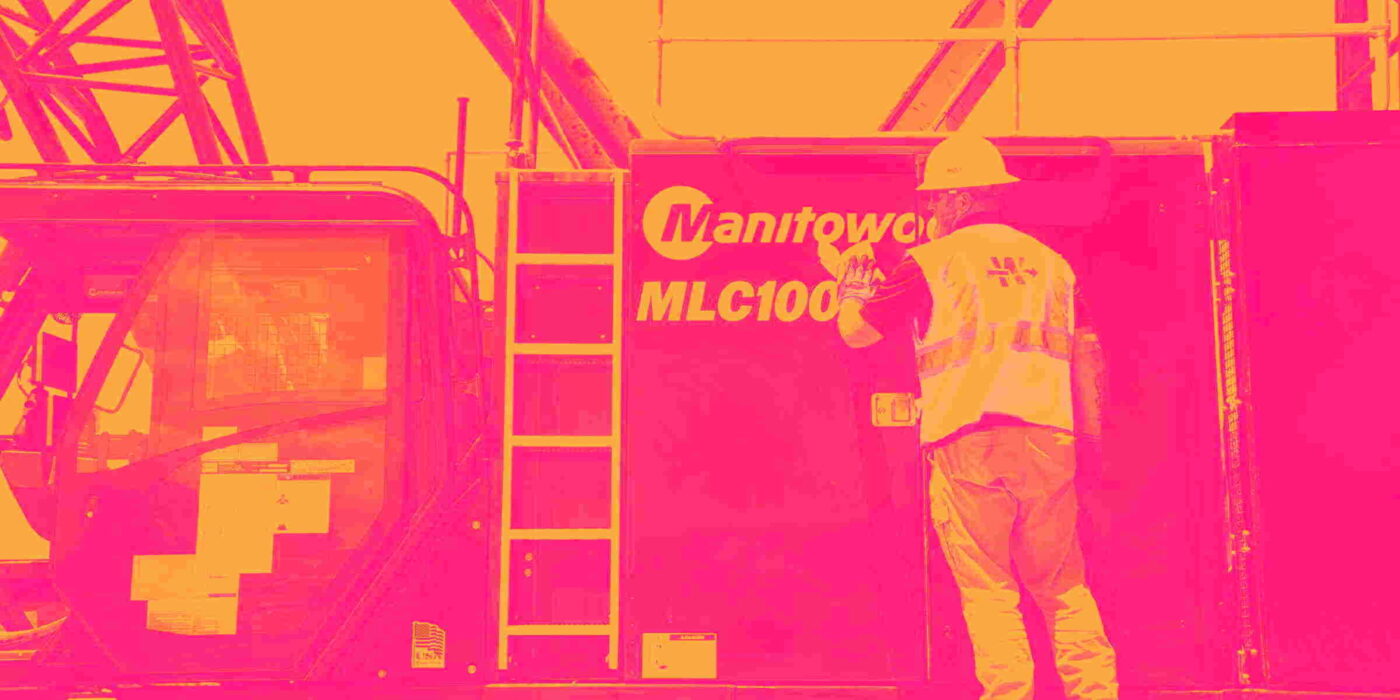
Crane and lifting equipment company Manitowoc (NYSE: MTW) fell short of the market’s revenue expectations in Q1 CY2025, with sales falling 4.9% year on year to $470.9 million. Its non-GAAP loss of $0.16 per share was 71% below analysts’ consensus estimates.
Is now the time to buy Manitowoc? Find out by accessing our full research report, it’s free.
Manitowoc (MTW) Q1 CY2025 Highlights:
- Revenue: $470.9 million vs analyst estimates of $482 million (4.9% year-on-year decline, 2.3% miss)
- Adjusted EPS: -$0.16 vs analyst expectations of -$0.09 (71% miss)
- Adjusted EBITDA: $21.7 million vs analyst estimates of $16.14 million (4.6% margin, 34.4% beat)
- Operating Margin: 1.1%, down from 3.1% in the same quarter last year
- Free Cash Flow was $2.1 million, up from -$42.8 million in the same quarter last year
- Backlog: $797.8 million at quarter end, down 17.9% year on year
- Market Capitalization: $299.5 million
“First-quarter results exceeded our expectations. We began to see signs of a turnaround in our Europe tower crane business with machine orders up 68% year-over-year, marking the third consecutive quarter of year-over-year growth. Our non-new machine sales for the first quarter grew 11% year-over-year to $161 million. Although the tariff situation remains fluid, our team continues to find different ways to mitigate the impact and, therefore, we are maintaining our guidance,” said Aaron Ravenscroft, President and Chief Executive Officer of The Manitowoc Company, Inc.
Company Overview
Contracted by the United States Navy during WWII, Manitowoc (NYSE: MTW) provides cranes and lifting equipment.
Sales Growth
Reviewing a company’s long-term sales performance reveals insights into its quality. Any business can put up a good quarter or two, but many enduring ones grow for years. Unfortunately, Manitowoc’s 4.3% annualized revenue growth over the last five years was sluggish. This fell short of our benchmark for the industrials sector and is a rough starting point for our analysis.
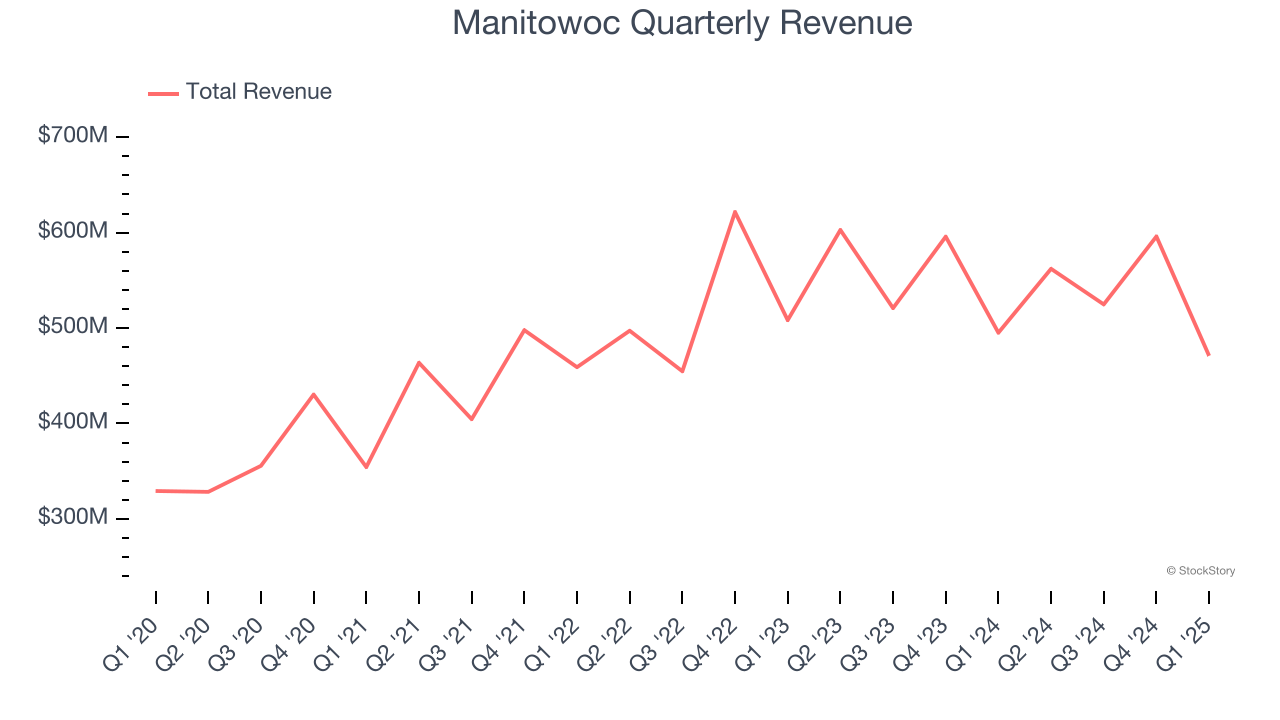
Long-term growth is the most important, but within industrials, a half-decade historical view may miss new industry trends or demand cycles. Manitowoc’s recent performance shows its demand has slowed as its annualized revenue growth of 1.7% over the last two years was below its five-year trend. 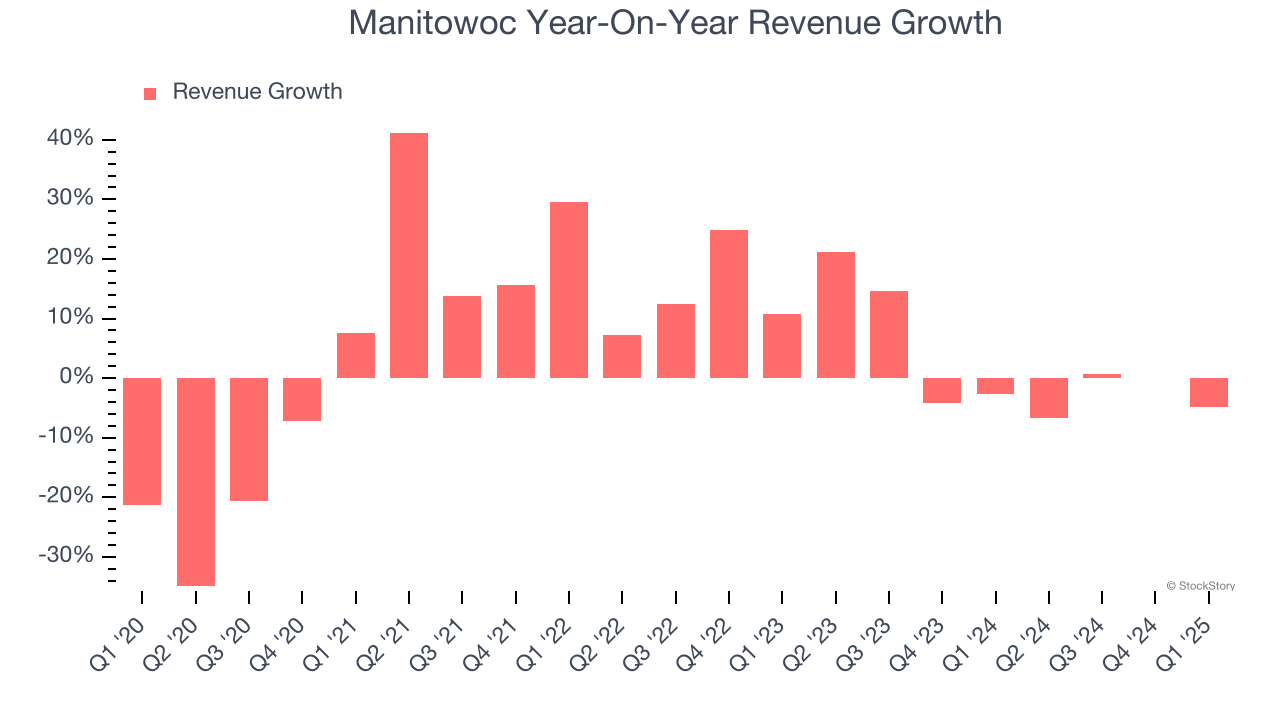
Manitowoc also reports its backlog, or the value of its outstanding orders that have not yet been executed or delivered. Manitowoc’s backlog reached $797.8 million in the latest quarter and averaged 12.4% year-on-year declines over the last two years. Because this number is lower than its revenue growth, we can see the company hasn’t secured enough new orders to maintain its growth rate in the future. 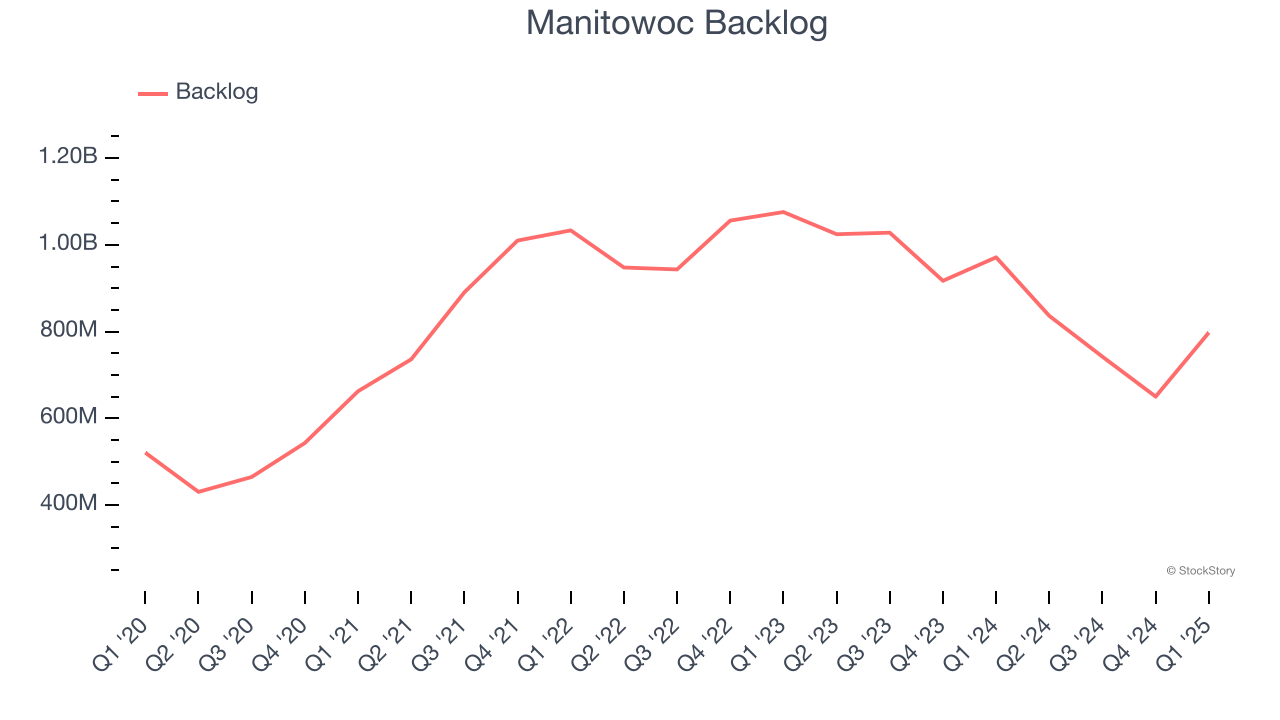
This quarter, Manitowoc missed Wall Street’s estimates and reported a rather uninspiring 4.9% year-on-year revenue decline, generating $470.9 million of revenue.
Looking ahead, sell-side analysts expect revenue to grow 2.4% over the next 12 months, similar to its two-year rate. This projection is underwhelming and indicates its newer products and services will not accelerate its top-line performance yet.
Here at StockStory, we certainly understand the potential of thematic investing. Diverse winners from Microsoft (MSFT) to Alphabet (GOOG), Coca-Cola (KO) to Monster Beverage (MNST) could all have been identified as promising growth stories with a megatrend driving the growth. So, in that spirit, we’ve identified a relatively under-the-radar profitable growth stock benefiting from the rise of AI, available to you FREE via this link.
Operating Margin
Manitowoc was profitable over the last five years but held back by its large cost base. Its average operating margin of 1.5% was weak for an industrials business. This result isn’t too surprising given its low gross margin as a starting point.
Analyzing the trend in its profitability, Manitowoc’s operating margin might fluctuated slightly but has generally stayed the same over the last five years. This raises questions about the company’s expense base because its revenue growth should have given it leverage on its fixed costs, resulting in better economies of scale and profitability.
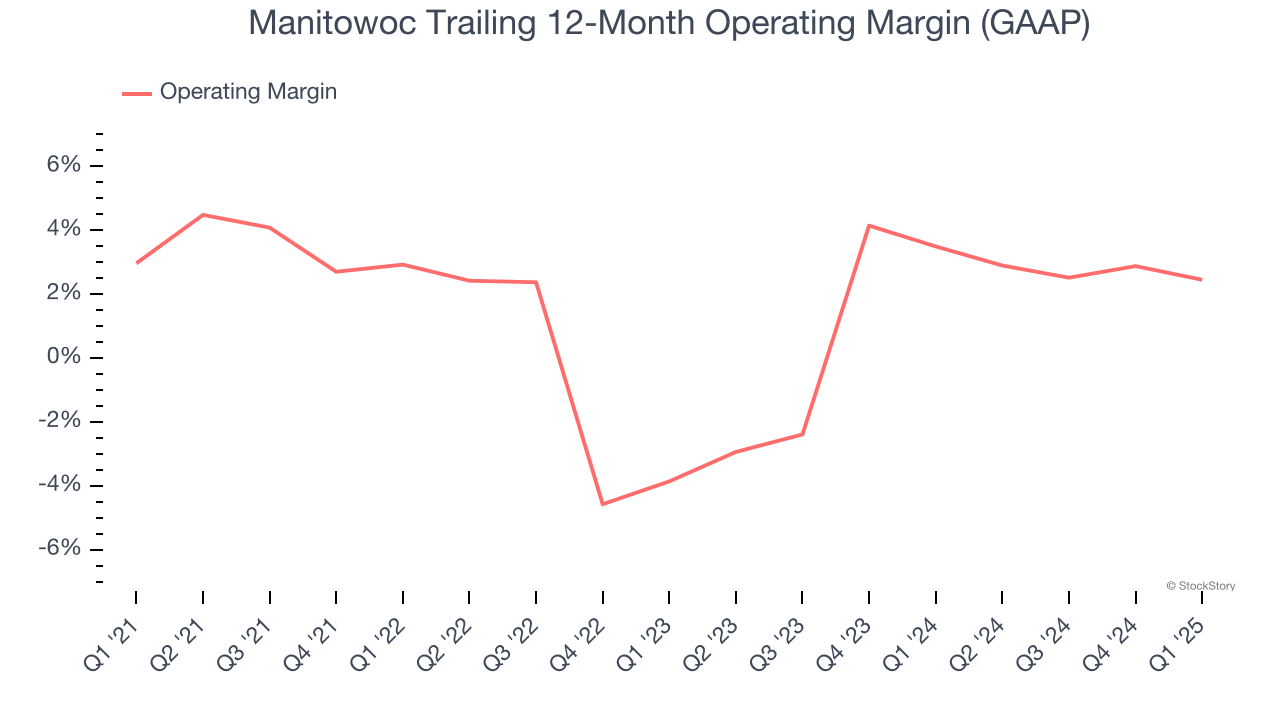
This quarter, Manitowoc generated an operating profit margin of 1.1%, down 1.9 percentage points year on year. Since Manitowoc’s operating margin decreased more than its gross margin, we can assume it was less efficient because expenses such as marketing, R&D, and administrative overhead increased.
Earnings Per Share
We track the long-term change in earnings per share (EPS) for the same reason as long-term revenue growth. Compared to revenue, however, EPS highlights whether a company’s growth is profitable.
Sadly for Manitowoc, its EPS declined by 42.1% annually over the last five years while its revenue grew by 4.3%. However, its operating margin didn’t change during this time, telling us that non-fundamental factors such as interest and taxes affected its ultimate earnings.
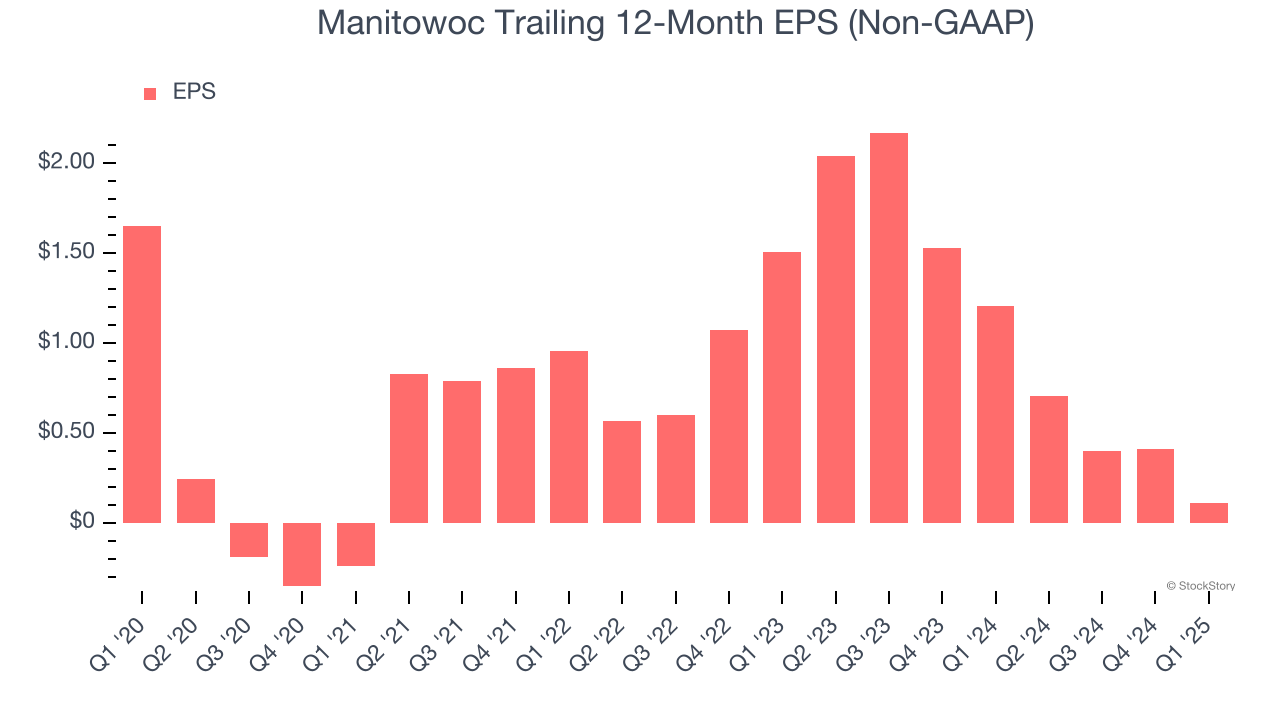
Like with revenue, we analyze EPS over a more recent period because it can provide insight into an emerging theme or development for the business.
Manitowoc’s two-year annual EPS declines of 73.3% were bad and lower than its 1.7% two-year revenue growth.
In Q1, Manitowoc reported EPS at negative $0.16, down from $0.14 in the same quarter last year. This print missed analysts’ estimates. Over the next 12 months, Wall Street expects Manitowoc’s full-year EPS of $0.11 to grow 594%.
Key Takeaways from Manitowoc’s Q1 Results
We were impressed by how significantly Manitowoc blew past analysts’ backlog expectations this quarter. We were also excited its EBITDA outperformed Wall Street’s estimates by a wide margin. On the other hand, its revenue missed significantly and its EPS fell short of Wall Street’s estimates. Overall, this print was mixed but still had some key positives. The market seemed to be hoping for more, and the stock traded down 3.5% to $8.01 immediately after reporting.
Is Manitowoc an attractive investment opportunity at the current price? When making that decision, it’s important to consider its valuation, business qualities, as well as what has happened in the latest quarter. We cover that in our actionable full research report which you can read here, it’s free.



